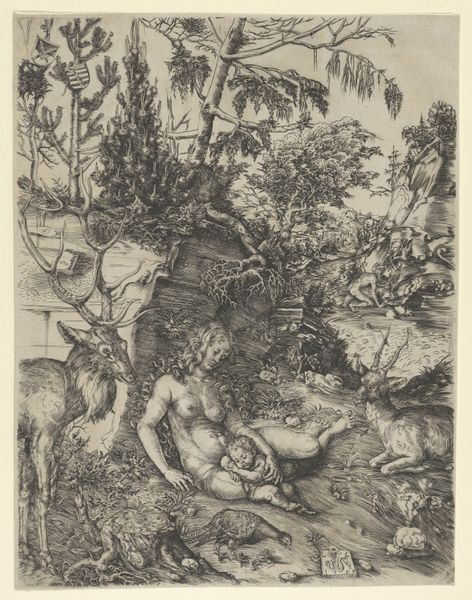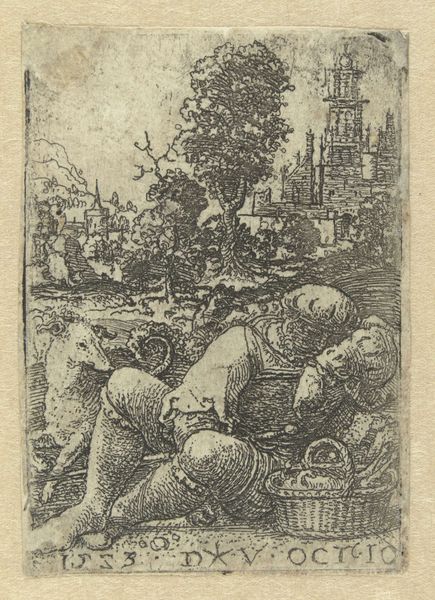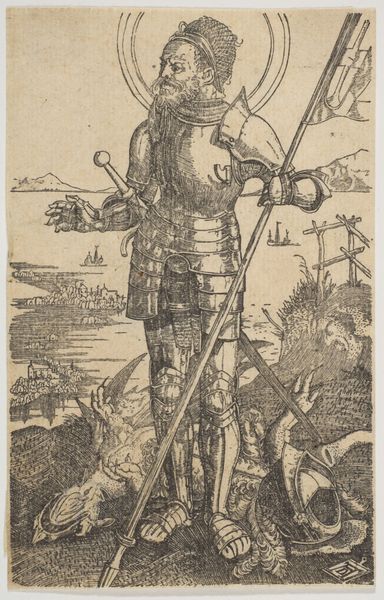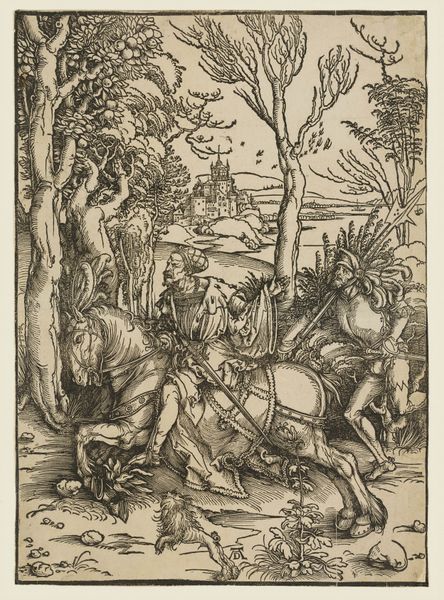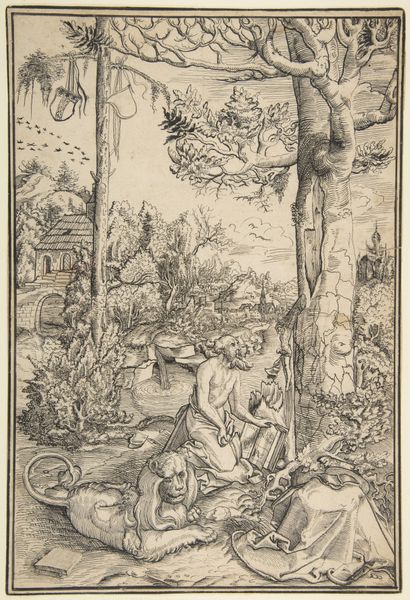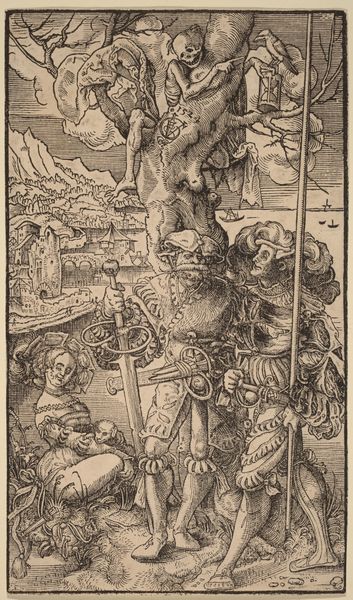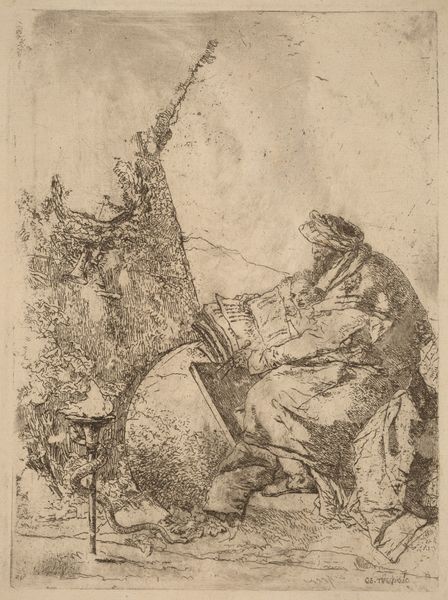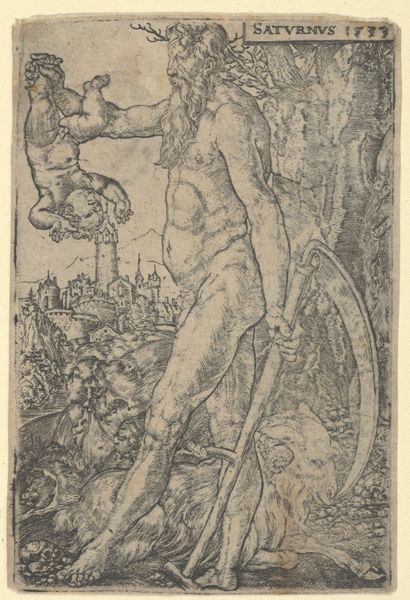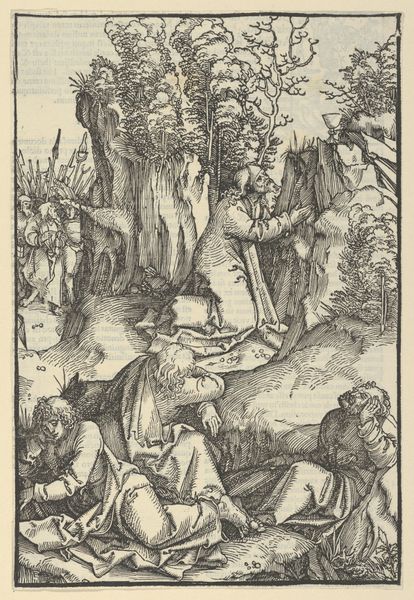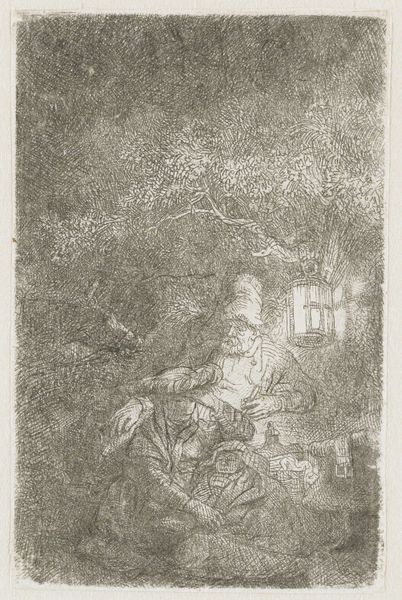
drawing, print, engraving
#
drawing
# print
#
landscape
#
figuration
#
men
#
genre-painting
#
northern-renaissance
#
engraving
Dimensions: sheet: 2 7/16 x 1 5/8 in. (6.2 x 4.2 cm)
Copyright: Public Domain
Editor: This is "The Smith," an engraving by Dirck Vellert, created sometime between 1520 and 1525. I'm immediately drawn to its texture and the incredibly detailed scene of labor, a snapshot into everyday life in the Northern Renaissance. It feels… intimate. What do you see in this piece? Curator: I see a constellation of symbols, radiating outwards. Note the blacksmith's intense focus – a microcosm of human endeavor. What does the presence of the sheep suggest to you? Does it ground the blacksmith, situating him in a rural, possibly pastoral context, connecting the manual labor to notions of biblical symbolism like care and craft? Editor: That's interesting. I hadn't considered the religious aspect so directly, but the sheep certainly gives the scene a sense of tranquility. Curator: Precisely! But the symbols also highlight a social tension. Metalwork, especially in this era, meant tools, weapons. So, is Vellert just showing a craftsman or alluding to burgeoning industries? This would potentially transform social relationships between individuals and collectives through acts of labor. Is the blacksmith empowered by his skills, burdened by his role in societal transformation, or both? The image captures this ambiguity, this precise moment of pre-industrial transition in which craft exists comfortably in bucolic contexts, even as industrial innovations are in nascent gestation. Editor: I see it differently now! It is not just an image of quiet labor but charged with all this symbolic meaning. Is that why he is situated outdoors and not in a closed forge? Curator: Quite right! The choice of open space creates dialogue between the traditional rural context of manual skill and an indication of the shift that trades and industry had to more public venues. How fascinating that Vellert placed these questions within this seemingly simple image! Editor: It's amazing how much history and cultural weight an image can hold, and how looking at an engraving can be so evocative. Curator: Indeed. Through visual symbols, we can unearth shared experiences, fears, and aspirations across time, finding our present selves mirrored in the past.
Comments
No comments
Be the first to comment and join the conversation on the ultimate creative platform.
